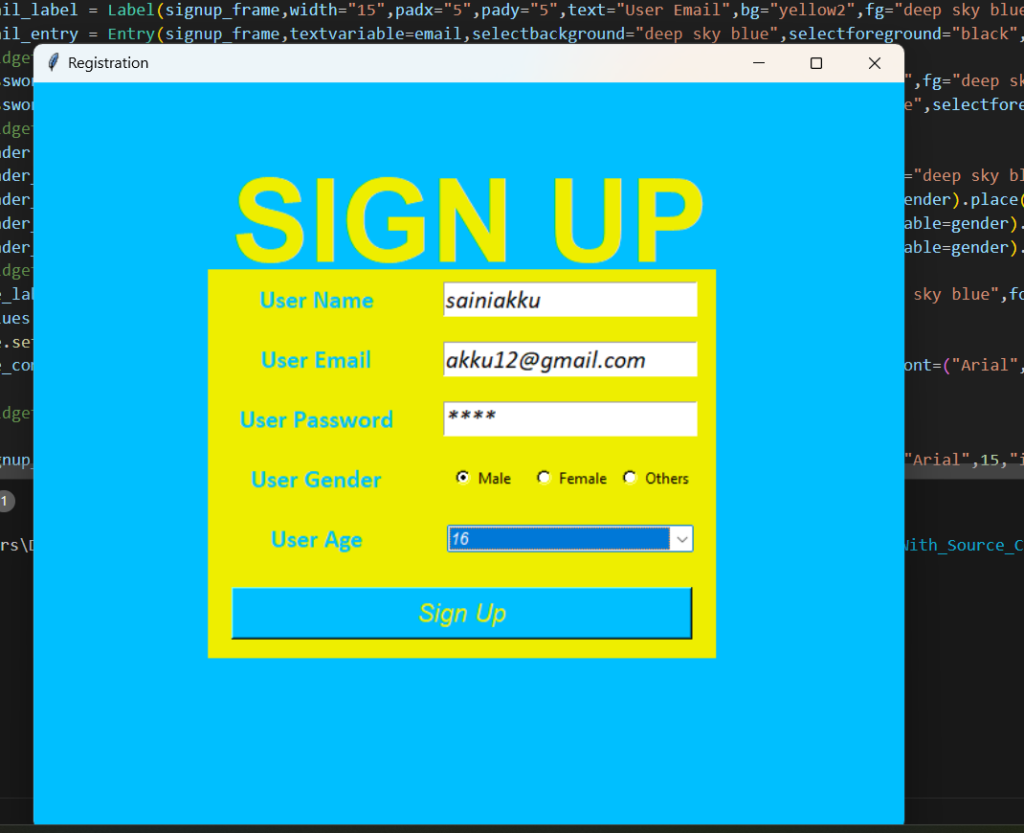Your cart is currently empty!

Registration System in Python with Source Code
Registration System in Python
A registration system is essential for securely managing user data across various platforms, from websites to event management. This project guides you through building a registration system in Python, complete with features like email validation, password encryption, and data storage. By creating this system, you’ll gain hands-on experience with user input handling, file operations, and security measures, making it a valuable project for both beginners and intermediate Python developers.
Table of Contents
Build a Registration System in Python
A registration system helps in managing users by allowing them to sign up and store their details securely. It involves handling various components such as:
- User Input: Collecting data like name, email, and password from users.
- Data Validation: Ensuring that the data entered is in the correct format (e.g., email validation, password checks).
- Data Storage: Storing the user data in a file or database.
This project is ideal for beginners as it touches on key programming concepts, including input handling, file I/O operations, and error checking.
Step 1: Setting Up the Basic Structure
Let’s start by setting up a simple console-based registration system in Python. Our system will prompt users to enter details like name, email, and password, and store them in a file for later retrieval.
Here’s a basic structure for our registration system:
#---Import Librarires
from tkinter import *
from tkinter import ttk
from tkinter import messagebox
#----Functions/Actions
def validation():
if name.get()!="" and email.get()!="" and password.get()!="" and gender.get()!="" and age.get()!="":
email_check=email_validation()
password_check=password_validataion()
duplicate_check=duplicates()
if email_check:
if duplicate_check:
messagebox.showinfo("information","User Email Already Exist")
elif password_check:
insertion_data()
messagebox.showinfo("information","Data Inserted Sucessfully")
shifting_form()
else:
messagebox.showerror("Error","Password should be (max 7 characters ,upper and lower case letter , number and symbol)")
else:
messagebox.showerror("Error","Email Fromat Is Not invalid")
else:
messagebox.showerror("Error","Fill All The Required Feilds")Step 2: Explanation of the Code
- Email Validation:
- The
validate_email()function uses a regular expression to check if the email entered by the user follows a valid format. - If the email is not valid, the program prompts the user to try again.
- User Registration:
- The
register_user()function collects user input for the name, email, password, and password confirmation. - If the passwords don’t match or the email is invalid, appropriate error messages are displayed, and the registration is aborted.
- Data Storage:
- If the input passes all validation checks, the user’s data is stored in a file (
users.txt). Each line in the file contains a user’s name, email, and password, separated by commas. - Using a file allows you to maintain a persistent storage of registered users that can be used for further processing.
New Project :-https://www.youtube.com/@Decodeit2
PHP PROJECT:- CLICK HERE
Step 5: Running the Application
To run the registration system:
- Save the code in a Python file (e.g.,
signup.py.). - Run the file from the terminal or command prompt:
python registration_system.pyComplete Code

- Registration System in Python with Source Code
- Registration System in Python
Share this content:
Leave a Reply